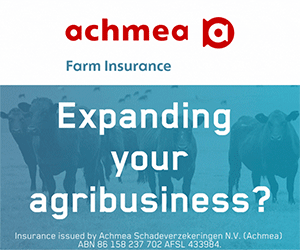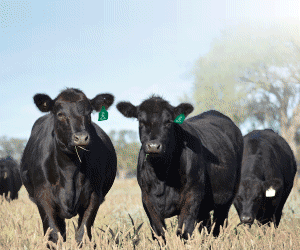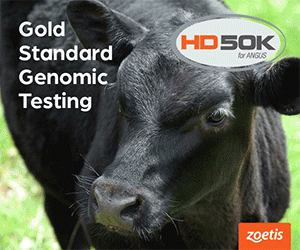An Expected Progeny Difference (EPD), is the genetic prediction of how future progeny of each selection animal are expected to perform relative to the progeny of other animals. EPDs are expressed in units of measure for the trait, with plus or minus.
EPDs are like Estimated Breeding Values (EBVs), in that they are estimates of genetic differences. However, EPDs focus on describing progeny differences, while EBVs focus on describing the genetic differences in the selection candidates (e.g. sires and dams). Simply, an EPD is half an EBV, all other things being equal (EBV/2=EPD).
There are thirteen EPDs published from the WAE covering calving ease, growth, carcase and structural soundness. The specific EPDs and their descriptions are:
Calving Ease Direct (CED), is expressed as a difference in percentage of unassisted births, with a higher value indicating greater calving ease in first-calf heifers. It predicts the average difference in ease with which a sire’s calves will be born when he is bred to first-calf heifers.
Calving Ease Maternal (CEM), is expressed as a difference in percentage of unassisted births with a higher value indicating greater calving ease in first-calf daughters. It predicts the average ease with which a sire’s daughters will calve as first-calf heifers when compared to daughters of other sires.
Birth Weight (BW), expressed in pounds, is a predictor of a sire’s ability to transmit birth weight to his progeny compared to that of other sires.
Weaning Weight (WW), expressed in pounds, is a predictor of a sire’s ability to transmit weaning growth to his progeny compared to that of other sires.
Yearling Weight (YW), expressed in pounds, is a predictor of a sire’s ability to transmit yearling growth to his progeny compared to that of other sires.
Scrotal Circumference (SC), expressed in centimetres, is a predictor of the difference in transmitting ability for scrotal size compared to that of other sires.
Maternal Milk (Milk) is a predictor of a sire’s genetic merit for milk and mothering ability as expressed in his daughters compared to daughters of other sires. In other words, it is that part of a calf’s weaning weight attributed to milk and mothering ability.
Claw Set (Claw) is expressed in units of claw-set score, with a lower EPD being more favourable indicating a sire will produce progeny with more ideal claw set. The ideal claw set is toes that are symmetrical, even and appropriately spaced.
Foot Angle (Angle) is expressed in units of foot-angle score, with a lower EPD being more favourable indicating a sire will produce progeny with more ideal foot angle. The ideal is a 45-degree angle at the pastern joint with appropriate toe length and heel depth.
Carcass Weight (CW), expressed in pounds is a predictor of the differences in hot carcass weight of a sire’s progeny compared to progeny of other sires.
Marbling (Marb), expressed as a fraction of the difference in USDA marbling score of a sire’s progeny compared to progeny of other sires.
Ribeye Area (RE), expressed in square inches, is a predictor of the difference in ribeye area of a sire’s progeny compared to progeny of other sires.
Fat Thickness (Fat), expressed in inches, is a predictor of the differences in external fat thickness at the 12th rib (as measured between the 12th and 13th ribs) of a sire’s progeny compared to progeny of other sires.
Note:
- Additional EPDs may be added to the WAE in the future. This will depend on further R&D to assess technical feasibility including phenotype compatibility.
- Due to the production system specific nature of Selection Indexes, no standard Selection Indexes will be published at this stage.
- Most EPDs will be listed in an imperial unit of measurement (e.g. pounds not kilograms). Please refer to the description of each EPD.






